Australian Tropical Rainforest Plants - Online edition
Uvaria leichhardtii (F.Muell.) L.L.Zhou, Y.C.F.Zu & R.M.K.Saunders

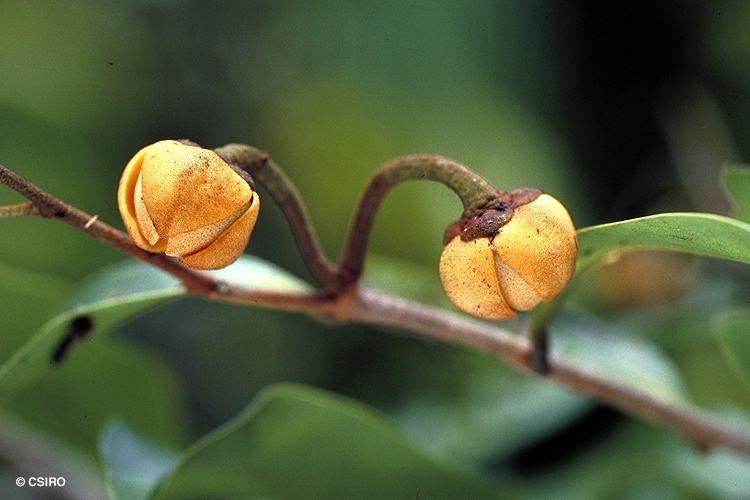
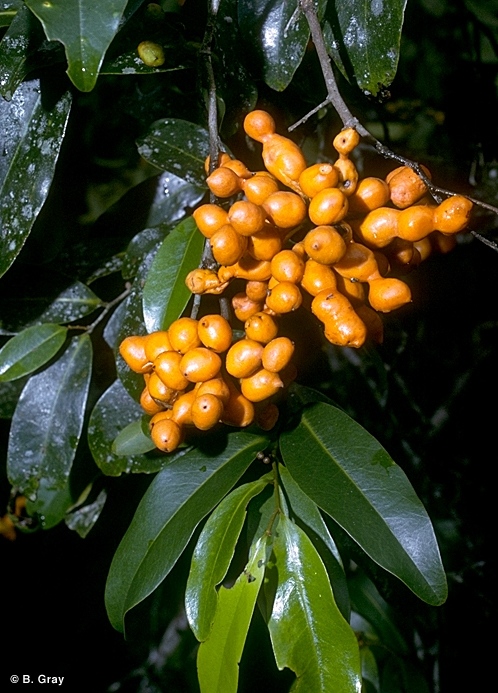
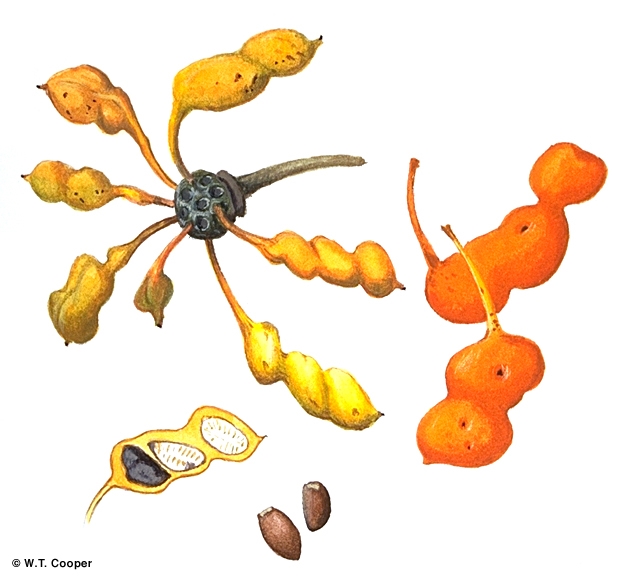
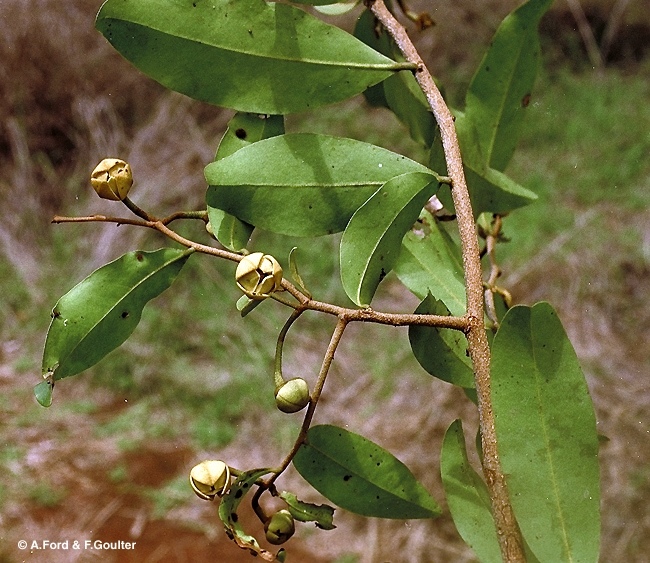
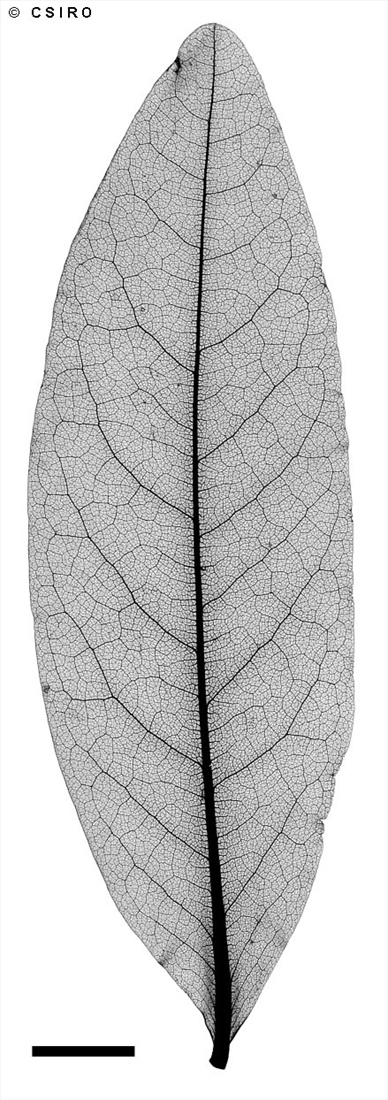



Zhou, L. Su, Y.C.F., Chalermglin, P. & Saunders, R.M.K. (2010) Botanical Journal of the Linnean Society 163: 39.
Vine, Zig-Zag; Acid Drop Vine; Merangara; Zig-zag Vine; Wild Banana; Banana, Wild
Usually grows as a tree-top vine, stem diameters to 9 cm recorded, but also flowers and fruits as a shrub. Blaze odour aromatic, perhaps resembling that of pepper. Cream granular and darker fibrous stripes visible in the blaze. Vascular rays visible in the wood in stem transverse sections but probably more obvious in the bark.
Very young, recently expanded, leaf bearing twigs clothed in minute, rusty brown, stellate hairs. Twig bark strong and fibrous when stripped. Oak grain in the twigs particularly the twig bark. Leaf blades about 6-19 x 2-6.5 cm. Petioles about 0.1-0.5 cm long, grooved on the upper surface. Lateral veins forming loops about 1-3 mm inside the margin.
Flowers often appear to be borne on the twigs opposite the leaves but the true situation is almost certainly somewhat different. (The flowers are probably terminal but the axillary bud in the axil of the final leaf produces a leafy shoot which takes over the function of the terminal shoot and this then makes the inflorescence appear lateral and leaf-opposed.) Flower odour, if present, resembles that of overripe bananas (Musa spp.). Petals thick and fleshy, about 12 mm long, three outer petals triangular and slightly longer than the three inner petals which are fused at the apex. Ovaries long and narrow, clothed in short +/- tortuous brown hairs. Stigma lobed, larger than the apex of the ovary.
Fruiting carpels in 'umbels'. Each carpel about 20-40 x 8-12 mm, on a stalk about 10-15 mm long. Seeds, up to five per carpel, transversely oriented in the fruiting carpel or more commonly obliquely oriented. Embryo minute.
At the tenth leaf stage: leaves ovate-lanceolate, apex acute or acuminate, glabrous at maturity but clothed in stellate hairs or scales when freshly expanded. Petioles, young stems and terminal buds clothed in brown (ferruginous) stellate hairs or scales. Seed germination time 47 to 421 days.
Occurs in CYP, NEQ, CEQ and southwards as far as north-eastern New South Wales. Altitudinal range in northern Australia from near sea level to 1100 m. Grows in well developed rain forest, gallery forest, monsoon forest and vine thickets. Also occurs in New Guinea and other parts of Malesia.
Food plant for the larval stages of the Fourbar Swordtail, Green Spotted Triangle and the Pale Green Triangle Butterflies. Common & Waterhouse (1981); Sankowsky & Neilsen (2000).
Fruit eaten by Cassowaries. Cooper & Cooper (1994).
Stem and bark material of this species was active against some tumors. Collins et al. (1990).
Red or orange-red peanut-shaped fruits edible and tasty.
Melodorum leichhardtii (F.Muell.) Benth., Flora Australiensis 1: 52 (1863). Rauwenhoffia leichhardtii (F.Muell.) Diels, Journal of the Arnold Arboretum 20: 74(1939). Fissistigma leichhardtii (F.Muell.) Merr., Philippine Journal Science 15: 133(1919). Unona leichhardtii F.Muell., Fragmenta Phytographiae Australiae 3: 41(1862), Type: Australia, Torampa, MacConnells Brush; L. Leichhardt. Clarence River; H. Beckler, J.Wilcox. Ipswich; J. Nernst. Rockhampton; A. Thozet.





